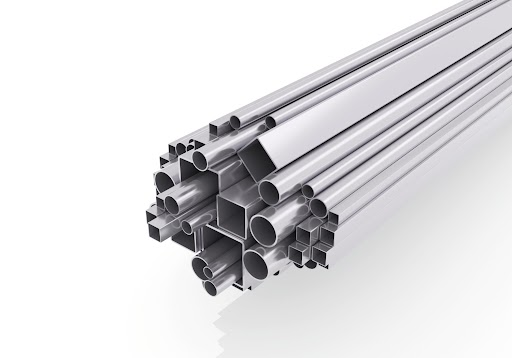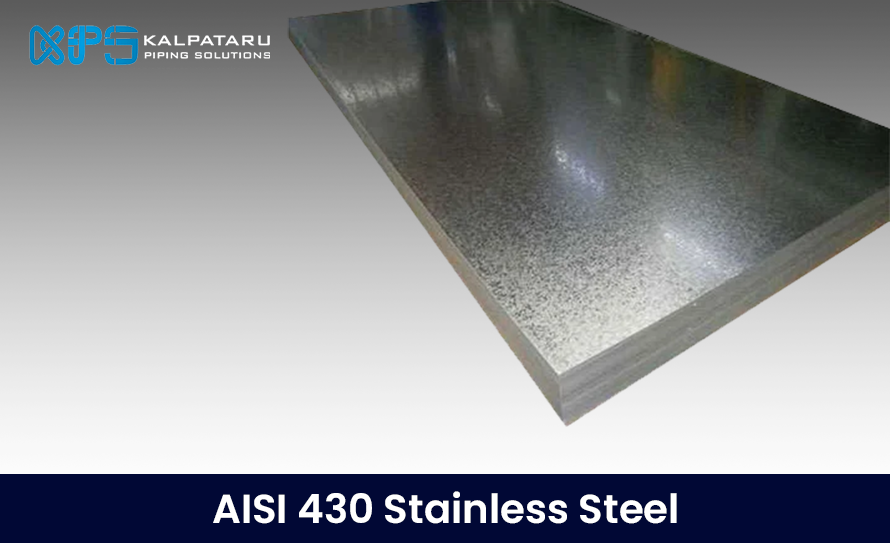Alloy steel is a type of steel made by combining iron and carbon with other elements like manganese, chromium, or nickel. These extra elements improve the steel’s strength, make it more resistant to rust, and suitable for many uses. You can find alloy steel in construction, cars, and manufacturing.
Alloy Steel
Alloy steel is a type of steel that combines iron and carbon with other elements like manganese, chromium, or nickel. These additional elements improve the steel’s strength, hardness, and resistance to corrosion, making it suitable for many industrial uses such as construction, automotive, and manufacturing.
What is Alloy Steel?
Alloy steel is made by mixing iron with various elements like manganese, chromium, nickel, or molybdenum. These added elements make the steel stronger, harder, and more resistant to corrosion. This makes alloy steel perfect for many industrial applications.
Alloy Steel Definition
Alloy steel is a blend of iron and other elements such as manganese, chromium, nickel, or molybdenum. Adding these elements improves the steel’s strength, hardness, and resistance to rust and wear.
Alloy Steel Composition
Alloy steel can be divided into three main categories based on its chemical composition: carbon steels, low-alloy steels, and high-alloy steels. Common alloying elements include manganese, nickel, chromium, molybdenum, vanadium, silicon, and boron. These elements are added to enhance the steel’s strength, hardness, and resistance to corrosion. While all steels contain trace contaminants from the manufacturing process, such as phosphorus and sulfur, these are not considered alloys as they typically make up less than 1% of the steel.
Alloy Elements in Steel
Several elements are commonly used to alloy steel, each providing unique benefits:
- Manganese: Increases strength and reduces brittleness.
- Nickel: Enhances corrosion resistance and toughness.
- Chromium: Improves hardness and corrosion resistance.
- Molybdenum: Increases strength at high temperatures and improves wear resistance.
- Vanadium: Enhances strength and hardness.
Other alloying elements include silicon, boron, aluminum, cobalt, copper, and more, each contributing to specific properties.
Common Grades of Alloy Steel Bars
Alloy steel bars are classified using a four-digit SAE-AISI code that indicates the major alloying elements and carbon content. Common grades include:
- 4140: Chromium-molybdenum steel with high tensile strength and toughness, used in gears and shafts.
- 4340: Nickel-chromium-molybdenum steel known for strength and fatigue resistance, used in aircraft components.
- 6150: Chromium-vanadium steel with high strength and abrasion resistance, used in springs and gears.
- 8620: Nickel-chromium-molybdenum steel with good weldability, used in carburized components like gears and pinions.
Alloy Steel Manufacturing Processes
Various processes are used to create alloy steel, depending on the type and grade needed:
- Electric Arc Furnace (EAF): Melts scrap steel or direct reduced iron (DRI) in an electric furnace, then adds alloying elements.
- Basic Oxygen Steelmaking (BOS): Uses liquid pig iron and scrap steel, with oxygen blown into a converter to oxidize impurities.
- Electric Induction Furnace (EIF): Melts scrap steel using electromagnetic induction.
- Crucible Process: Melts ferroalloys, steel scrap, and wrought iron in an airtight crucible.
- Bessemer Process: Blows air into pig iron in a converter to oxidize impurities.
- Open Hearth Process: Melts pig iron and scrap steel in a shallow hearth with gas or oil as fuel.
After casting, the steel is further processed into various forms like bars, rods, sheets, and tubes through methods such as hot rolling, cold rolling, forging, machining, heat treatment, and surface treatment.
Types of Alloy Steel
Low Alloy Steel
Low-alloy steel contains less than 5% of alloying elements such as chromium, nickel, molybdenum, and vanadium. These steels have improved mechanical properties like hardness, toughness, wear resistance, and corrosion resistance compared to ordinary carbon steel. A common example is 4130 steel, which contains 0.30% carbon and 1% chromium and molybdenum.
High Strength Low Alloy (HSLA) Steel
High Strength Low Alloy (HSLA) steel offers better mechanical properties and higher resistance to atmospheric corrosion compared to conventional carbon steel. Unlike regular alloy steels, HSLA steels are designed to meet specific mechanical requirements rather than just chemical compositions.
High Alloy Steel
High-alloy steels contain a high percentage of alloying elements. Stainless steel, which contains at least 12% chromium, is the most well-known high-alloy steel. There are three main types of stainless steel: martensitic, ferritic, and austenitic. These steels are used in applications requiring high strength and corrosion resistance, such as aerospace components, chemical processing equipment, and medical implants.
Stainless Steel
Stainless steel is an iron alloy known for its resistance to rust and corrosion. It contains a minimum of 11% chromium and may include other elements like carbon, nickel, and molybdenum. The main types of stainless steel are austenitic, ferritic, martensitic, duplex, and precipitation-hardening. Austenitic steels are the most corrosion-resistant and contain up to 35% nickel and 26% chromium.
Microalloyed Steel
Microalloyed steels contain small amounts (0.05% to 0.15%) of alloying elements like niobium, vanadium, titanium, molybdenum, and boron. These steels improve precipitation hardening and microstructure. They are known for their moderate strength, good toughness, excellent fatigue strength, and ease of welding, making them ideal for many engineering applications.
Advanced High Strength Steel (AHSS)
Advanced High Strength Steel (AHSS) is primarily used in automotive structures. These steels have multiphase microstructures, initially with ferrite as the main phase, but newer grades are martensitic or austenite-based. AHSS is designed to meet stringent safety and efficiency requirements while remaining cost-effective and easy to manufacture.
Maraging Steel
Maraging steel is known for its exceptional strength and toughness without losing ductility. The term “maraging” comes from “martensitic” and “ageing,” referring to the prolonged heat-treatment process. These steels are classified by their nominal tensile strength (e.g., SAE grades 200, 250, 300, or 350). They feature ultra-high strength, good machinability, excellent toughness, moderate corrosion resistance, and good weldability.
Tool Steel
Tool steel is specially designed for making tools and tooling, such as cutting tools, dies, hand tools, and knives. These steels are crucial for their resistance to abrasion, which is essential for the durability of injection molds and other tooling. Tool steels contain high carbon content and carbide-forming elements like chromium, molybdenum, tungsten, and vanadium for strength and high-temperature performance.
Alloy Steel Properties
Alloy steel is a type of steel that is enhanced by adding small amounts of other elements to pure carbon steel. These added elements give alloy steel better properties like increased strength, hardness, and resistance to wear. The main goal of adding these alloying elements is to improve the steel’s physical and mechanical characteristics, such as toughness, high-temperature performance, and corrosion resistance.
Alloy Steel Applications
Alloy steel is used in a wide range of products, from everyday items like hand tools and flatware to highly demanding applications like turbine blades in aircraft engines and nuclear reactors. Here are some common uses of alloy steel:
- Building Structures: Alloy steel is used to build the frameworks of large buildings like arenas, skyscrapers, airports, and bridges.
- Bridge Construction: Alloy steels, which include elements like nickel, copper, and chromium, are essential in building bridges.
- Flat Products: High-quality alloy steel is used to make flat slabs and strips for welding in construction.
- Coil Products: Alloy steel sheets, which can be hot or cold rolled, are often galvanized and used in building components like side rails, light steel frames, roof purlins, and lintels.
- Automotive: Parts like axles, gears, and crankshafts in vehicles are made from alloy steel due to its strength and durability.
Alloy Steel Advantages
Alloy steel has several advantages over traditional carbon steel:
- Improved Strength and Durability: Alloy steel is stronger and more durable, making it ideal for heavy-duty applications like construction and heavy machinery.
- Better Resistance to Elements: Alloy steel is more resistant to rust and other environmental damage, allowing it to be used outdoors without worrying about corrosion.
- Ease of Welding: Alloy steel is easier to weld compared to traditional carbon steel, which is beneficial in various construction and manufacturing processes.
Alloy Steel Disadvantages
However, alloy steel also has some drawbacks:
- Higher Cost: Alloy steel is generally more expensive than carbon steel.
- Less Malleability: It is less malleable compared to carbon steel, which can limit its use in certain applications.
- Lower Melting Point: Alloy steel has a lower melting point than carbon steel, which can affect its performance in high-temperature applications.
- Processing Challenges: Alloy steel is more challenging to process and work with than carbon steel.
Examples of Alloy Steel
Here are a few examples of different types of alloy steel:
- Nickel Steel: Contains a high percentage of nickel, known for its high strength and toughness.
- Manganese Steel: Contains a high percentage of manganese, known for its high impact strength and wear resistance.
- Chromium-Molybdenum Steel: Contains chromium and molybdenum, known for its high strength and corrosion resistance.
These examples show the diverse compositions and properties of alloy steels, making them suitable for various specialized applications.
Differences Between Alloy Steel and Carbon Steel
Here are some of the key differences between alloy steel and carbon steel.
| Alloy Steel | Carbon Steel |
| Alloy steels vary in thermal conductivity but are generally less conductive than carbon steels. | Carbon steels have a higher thermal conductivity of about 45 W/(mK). |
| Alloy steels have higher tensile strength than carbon steels (up to 960 MPa). | Carbon steels have lower tensile strength (450 MPa). |
| Alloy steels are used in a variety of high-temperature applications, such as in petrochemical and power plants. | Carbon steels are used in applications without particularly high temperatures. |
FAQs
What is the alloy steel?
Alloy steel is steel mixed with elements like molybdenum, manganese, nickel, and chromium. These additions enhance its strength, hardness, wear resistance, and toughness, ranging from 1% to 50%.
Is alloy steel good quality?
Yes, alloy steel is high quality. It resists wear, corrosion, and high temperatures. Heat treatment can further enhance its strength and hardness, making it even more durable.
Which grade is alloy steel?
Common alloy steel grades include 4140 (Chromium Molybdenum Steel), 4340 (Nickel-Chromium-Molybdenum Steel), 6150 (Chromium Vanadium Steel), and 8620 (HSLA Nickel-Chromium-Molybdenum Steel).




